Herbs: 4 simple ways to use these common plants
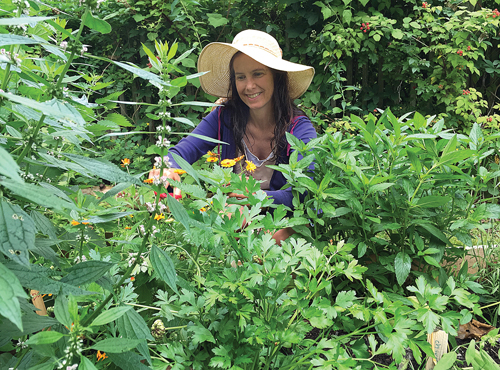
Herbs are for more than just sprinkling into a pot of bubbling tomato sauce.
Yes, they “smell and taste delicious,” said New Suffolk herbalist Heather Cusack, but these plants, many of which are now in bloom, can just as easily be used for medicinal and cosmetic purposes.
“They can be used for so many things,” said Ms. Cusack, who owns Heather’s Herbals. “They aren’t pharmaceutical and they’re really simple and have been used for thousands of years.”
Ms. Cusack, who maintains herb gardens for Peconic Land Trust, Downs Farm Preserve and the Peconic Lane Community Center, is in the midst of teaching weekly workshops about alternative uses for herbs.
So far, she’s taught students how to make their own herbal teas and create a solar-infused oil and flower essence. Her newest workshop, “The Summer Herb Garden,” takes place Thursdays from 6 to 7 p.m. beginning today, July 9, at the Peconic Lane Community Center. It’s offered through the Southold Town Recreation Department.
The series runs through Aug. 13 and costs $38 for Southold Town residents and $48 for nonresidents. There is also a $5 materials fee. To register, visit southoldtownny.gov.
In addition, Ms. Cusack will teach part 3 of a Peconic Land Trust workshop series about using herbs as salves, tinctures and teas at 10 a.m. Friday, July 10, at the Agricultural Center at Charnews Farm in Southold. The cost is $20 per person, which includes materials. Prepaid reservations are required.
If you’re eager to begin experimenting on your own with some herb-infused recipes, read on for some basic instructions from Ms. Cusack. Don’t have any herbs on hand? Head to the nearest farm stand, garden center or grocery store and keep in mind that some herbs, like plantains and sorrel, can sometimes be found right in your own backyard.
1. Treat cuts and insect bites
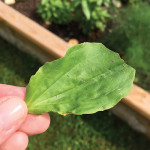 The aforementioned plantain grows in the wild and looks like a weed, but this herb is often referred to as “nature’s Band-Aid,” Ms. Cusack said.
The aforementioned plantain grows in the wild and looks like a weed, but this herb is often referred to as “nature’s Band-Aid,” Ms. Cusack said.
And for good reason: the soft leaf has natural astringent properties, she said, and can be applied directly to skin to help heal cuts or ease the sting of mosquito bites.
That’s not all plantain is good for: “If you have problems with your teeth or with an abscess or gingivitis, it’s really good for tightening up those gums,” Ms. Cusack said. “Just chop it up and make a little poultice and stick it in your mouth for a while.”
2. Make a lip salve
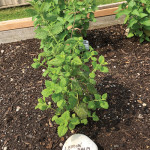 All you need to make a moisturizing, all-natural lip treatment is some lemon balm and beeswax, Ms. Cusack said.
All you need to make a moisturizing, all-natural lip treatment is some lemon balm and beeswax, Ms. Cusack said.
Start with clean equipment and begin making a lemon balm-infused oil, she said. (For detailed instructions, visit lemonbalm.org/how-to-make-lemon-balm-ointment-salve-balm/).
Once the oil is made, add beeswax to the mixture and allow it to harden and then cool. The salve will last between three months and a year, depending on how it’s stored.
3. Calm down with catnip
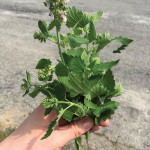 No, we’re not kidding. This herb might make your kitty bounce off the walls, but catnip has a surprisingly soothing effect on people.
No, we’re not kidding. This herb might make your kitty bounce off the walls, but catnip has a surprisingly soothing effect on people.
“I put a little catnip in my tea mixes because it helps calm the nervous system,” Ms. Cusack said. “It’s traditionally used because it’s a very gentle herb for children if they’re having trouble sleeping or have colic.”
Crush the leaves and add them to your favorite cup of tea or sprinkle them around your pillow. Nursing mothers can drink catnip-infused tea and pass on the benefits to their babies, Ms. Cusack said.
4. Brew an infused tea
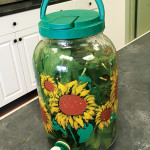 Making your own herbal tea is as simple as chopping up some fresh or dried herbs, adding them to water and leaving the mixture outside to infuse.
Making your own herbal tea is as simple as chopping up some fresh or dried herbs, adding them to water and leaving the mixture outside to infuse.
Add chopped herbs (peppermint, chamomile and lemon verbena are flavorful options) to a pitcher or Mason jar that has been carefully cleaned until the container is three-quarters full, Ms. Cusack said. Next, fill with cold water. Place the container outside in direct sunlight and until the tea reaches your desired strength — but no more than three to four hours.
“If it’s a really hot, sunny day, it’s going to infuse pretty quickly — about 20 minutes,” Ms. Cusack said. “If it’s overcast, it might take a couple hours.”
To enjoy your tea even sooner, use dried herbs, she said. That will cut the process down to about five or 10 minutes.


